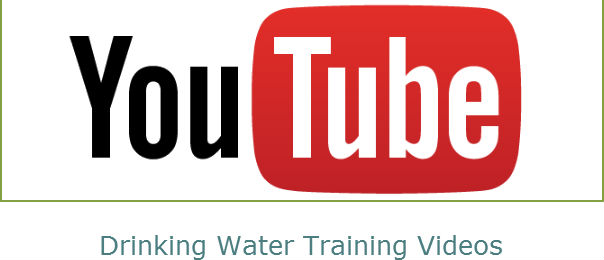The Revised Total Coliform Rule (RTCR) is effective April 1, 2016 and utilizes regular bacteria (coliform) monitoring as an indicator for system integrity, to signal possible fecal contamination, and the presence of waterborne pathogens. The RTCR applies to every public drinking water system in Vermont. This new rule is an update to the 1989 Total Coliform Rule and provides some key changes.
Total coliform is a group of bacteria that does not pose an immediate risk to public health by itself. Total coliform exists in all sorts of locations, including plant and soil material, and in digestive tracts of animals but should not be present in finished drinking water. The presence of total coliform in drinking water indicates a potential pathway by which contamination, such as E. coli and other waterborne pathogens (the things that can make you sick) can enter the drinking water distribution system. Instead of sampling for a number of parasites, viruses, and other bacteria, which can be difficult and expensive, total coliform is used as the indicator for how well a system is doing at keeping pathogens out of the water. If total coliform is getting into the water, it means that a pathway exists through which more harmful pathogens can get into the water.
Key Changes under the RTCR:
- There is no more Total Coliform MCL, E. coli MCL remains
- No more Total Coliform-based Public Notice or Boil Water requirements in Vermont. However, E. coli-based boil and Public Notice within 24 hours remains
- Systems must take 3 repeat samples for each positive routine sample within 24 hours of learning of the positive sample
- Systems sampling monthly resume normal monthly monitoring the month following a routine positive sample
- Systems sampling quarterly must perform 3 additional routine samples the month following a routine positive sample and keep sampling until samples are absent or increased monitoring is triggered
- The State cannot waive the requirement to perform routine or repeat samples
- 2 or more positive total coliform samples in a month triggers a site assessment
- Seasonal TNC systems must complete a state-approved startup form and sample on a monthly schedule for the months in which they are open
- State may require a boil water notice due to site assessment or ongoing issues
- E. coli MCL violation requires a boil water notice and a Level 2 Site Assessment
RTCR Guidance
The Division has created a 3-hour training on the Revised Total Coliform Rule.
Sampling Resources
The Division has created a small pocket guide to assist operators and samplers by explaining when repeat samples are required and how many samples are collected when.
Site Assessment Resources
If it is the first site assessment triggered in the last 12 months, a level 1 site assessment is triggered when a system has two or more total coliform positive samples in one month or if the system fails to take all required repeat samples following a positive routine sample. If the system triggers a second Level 1 Site Assessment within 12 months or exceeds the E. coli MCL, a Level 2 Site Assessment will need to be performed. Below you will find some guidance on site assessments:
Having issues identifying sanitary defects or corrective actions? This is a guidance on sanitary defects and acceptable corrective actions.
RTCR Sampling Plan Forms
Example Community System Under 1,000
Example TNC Restaurant System
Example TNC Campground System
Example TNC Motel System
Assessments
An NTNC or TNC system that has been triggered into monthly monitoring must complete all the following steps to return to quarterly monitoring:
1. The issue that led to the increased monitoring has been resolved;
2. Have a clean compliance history. This includes not triggering an RTCR Level I or Level II Assessment and having no monitoring violations, reporting violations, or treatment technique violations for the previous twelve months;
3. Have a protected source. This includes but may not be limited to having a valid Source Permit, a groundwater under the direct influence of surface water (GWUDI) determination, no source-related deficiencies or defects, and/or a current approved Source Protection Plan (if applicable); and
4. Have had a Sanitary Survey or voluntary Level II Assessment (a triggered Level II Assessment does not meet this requirement). This must be the final step, after all the other requirements have been met, to confirm there are no further sanitary defects at the time the system is petitioning to return to quarterly sampling. This includes any sanitary defect that may have been identified prior to beginning increased monitoring.
The table below identifies those contractors who are authorized to perform voluntary Level II Site Assessments. Voluntary Level II Assessments will not be paid for by the Division; it is up to the water system to directly contract with one of the trained assessors identified below:
| Firm | Contact | Location | Phone | Website | |
|---|---|---|---|---|---|
| Earth Water Specialist, Inc. | Paula Jackson | Colchester | Office: (802) 878-7636 Mobile: (802) 343-1356 |
paulajacksonews@ gmail.com |
|
| DuBois & King | Andrew Hoak, PE and Jon Ashley, PE | Jon: Brandon Andrew: Randolph | Jon: 802-465-8376 Andrew: 802-728-3376 |
Jon: jashley@ dubois-king.com Andrew: ahoak@ |
https://www.dubois- king.com |
| Aquaterra | Roland Luxenberg | North Ferrisburgh | 802-238-0071 | roland@ luxenberg.us |
N/A |
| Marble Valley Engineering, PC | Kevin Smith, Project Manager | Rutland | 802-775-1181 X14 | http://www.marblevalley engineering.com |


